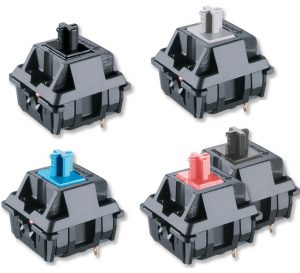Discover Just How a Membrane Switch Improves Sturdiness and Capability in Instruments
Discover Just How a Membrane Switch Improves Sturdiness and Capability in Instruments
Blog Article
Exactly How Membrane Changes Contribute to the Longevity of Electronic Control Panels
Membrane buttons play a vital duty in enhancing the longevity of digital control panels, mainly via their multi-layered building which supplies effective security against ecological aspects such as wetness and dust. The lack of relocating parts substantially lowers the chance of mechanical failings, making membrane changes suitable for demanding applications.
Definition of Membrane Switches

Membrane layer switches are made to be slim and light-weight, making them ideal for applications where area is restricted. They can be produced in numerous shapes, sizes, and shades, providing versatility in design that meets aesthetic and useful demands. In addition, membrane layer switches can include various innovations, such as tactile feedback and LED indications, boosting individual experience.
Because of their construction, membrane buttons are typically immune to dirt, dampness, and general wear, adding to their longevity sought after atmospheres. Their seamless design not only facilitates very easy cleaning but also lessens the risk of mechanical failing, making them a favored selection for makers looking for trustworthy individual interfaces in their electronic control board.
Defense Versus Environmental Factors
The style of membrane switches inherently gives a degree of security against different environmental variables, which is essential for maintaining performance in difficult problems - Membrane Switch. These buttons are generally created with layers of flexible products that secure internal components from dampness, dust, and pollutants. By enveloping the circuitry, membrane switches minimize the risk of brief circuits and corrosion, which can significantly hinder performance
Additionally, making use of durable adhesives and sealants during production boosts their resistance to environmental obstacles. Membrane layer buttons can withstand direct exposure to chemicals and solvents, making them appropriate for markets such as food processing and medical care, where hygiene and tidiness are extremely important. Their smooth surface layout additionally avoids the accumulation of dirt and bacteria, assisting in much easier cleansing and maintenance.
Temperature fluctuations are one more environmental concern, and membrane layer buttons are engineered to function successfully across a vast array of temperatures (Membrane Switch). This flexibility makes sure that control panels continue to be functional in various setups, from industrial atmospheres to consumer electronic devices
Influence On Customer Interaction
Individual interaction with electronic control board is considerably affected by the layout and capability of membrane layer switches. These buttons supply a tactile user interface that my website boosts the general individual experience, permitting user-friendly navigating and control. Their receptive nature guarantees that users receive immediate feedback upon activation, which is essential for tasks requiring precision and efficiency.
Moreover, the smooth surface of membrane switches assists in very easy cleaning and maintenance, promoting customer confidence in the dependability of the user interface. This sanitation is specifically crucial in settings where health is vital, such as clinical or food handling settings. Furthermore, the portable and light-weight layout of membrane switches adds to the visual appeal of control panels, urging user engagement with a modern-day and sleek appearance.
In addition, the assimilation of aesthetic aspects, such as printed symbols and backlighting, helps customers rapidly identify functions, lowering the finding out curve related to brand-new devices. Consequently, individuals can run tools better, resulting in increased efficiency and fulfillment. In summary, membrane buttons play a pivotal function in improving user interaction by incorporating performance, aesthetics, and convenience of usage, eventually leading to boosted operational effectiveness.
Layout Versatility and Personalization
Layout adaptability and personalization are vital facets of membrane switches, allowing producers to tailor digital control board to specific applications and customer demands. This versatility enables the integration of different layout components, such as colors, graphics, and textures, which can enhance the aesthetic charm and customer engagement of the control panel.
Membrane switches can be customized in shapes and size, accommodating a vast array of devices and applications, from commercial equipment to customer electronic devices. This adaptability ensures that manufacturers can produce user-friendly interfaces that line up with user assumptions and operational demands. Additionally, the capability to include distinct attributes such as backlighting or tactile comments even more boosts use, permitting an extra interactive Continue experience.
In addition, the manufacturing procedure for membrane changes supports the rapid prototyping of designs, enabling manufacturers to repeat and improve their principles swiftly. This ability not only accelerates the development timeline yet also makes certain that the final item meets certain useful and visual standards.

Cost-Effectiveness and Durability
Cost-effectiveness and long life are substantial benefits of membrane buttons, making them an attractive choice for manufacturers and end-users alike. These buttons are commonly less costly to create than conventional mechanical switches, largely due to their streamlined production processes and the decreased number of elements needed. This cost benefit expands not just to initial production yet also to long-lasting operational expenses, as membrane layer switches typically require less upkeep and have a reduced failing rate.
Furthermore, the durability of membrane switches adds to their total worth. Created from long lasting materials, they are immune to ecological variables such as wetness, dirt, and chemicals, which can bring about early wear in other switch types. The absence of moving parts reduces mechanical failure, allowing membrane layer switches to keep performance over extended durations.
This toughness is particularly advantageous in see here now applications needing consistent performance under demanding conditions, such as medical tools and commercial equipment. Eventually, the mix of cost-effectiveness and long life makes membrane layer switches an economically feasible choice for producers, supplying trusted options that hold up against the test of time while maximizing financial factors to consider.
Final Thought
In final thought, membrane buttons significantly improve the sturdiness of digital control panels with their robust building and safety features - Membrane Switch. Overall, membrane layer changes represent a dependable and cost-efficient option for boosting the long life and performance of digital control systems.
Report this page